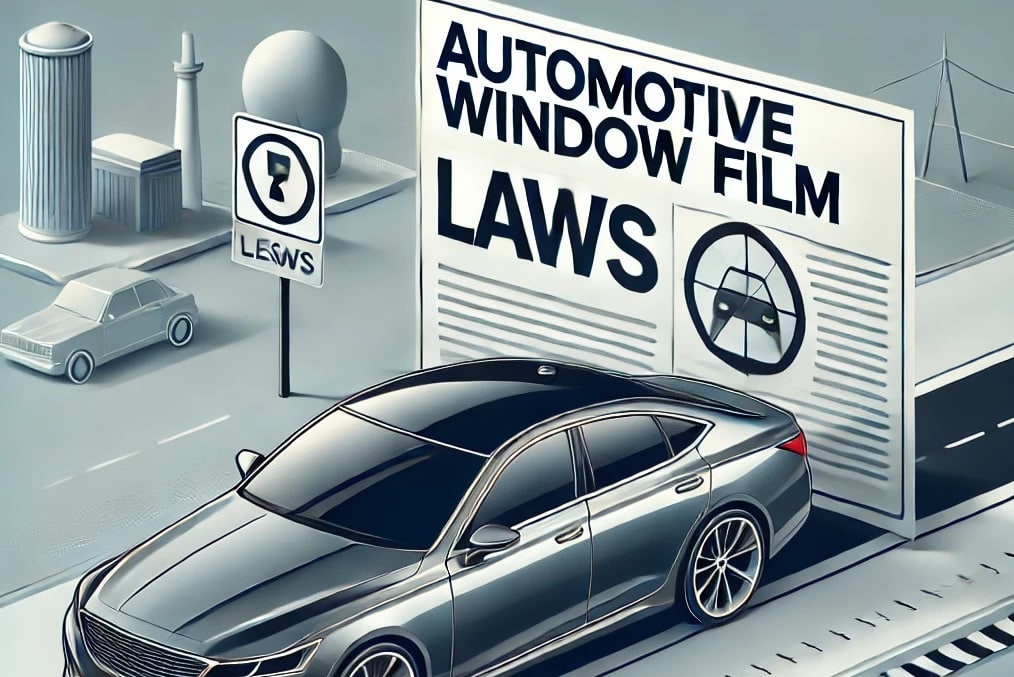It’s important to learn all the basic and essential rules and regulations about automotive window film laws before you turn the steering toward the road. In the USA, the government has enforced some laws and regulations that are strictly observed. You cannot break these rules.
However, you must consult some experts if you don’t have adequate information about these tinting laws. Moreover, if you follow these rules, you can have a smooth and calm driving experience. This blog will guide you through the automotive window film laws. So, keep on reading to learn more about it.
Understand the Car Window Tint Laws
It is crucial to know the car window tint laws because they can make your head spin. Each state has its own rules, and no adequate knowledge about them can lead to fines or even make you redo the tint job you just paid for. So, let’s break down what you need to know about these laws and why Visible Light Transmission (VLT%) matters for your tinted windows.
State Regulations Overview
The rules for how dark you can tint your car windows can differ depending on your location. Each state has its limits on tint darkness and where on the car windows you can apply it. Mess this up, and you could face fines or, worse, you have to peel it off. Want to get the details right? Check out Rayno Window Film for a full guide on what each state allows.
What is Visible Light Transmission (VLT%)?
Visible Light Transmission, or VLT%, shows how much light gets through your tinted windows. Lower numbers mean darker tints and higher numbers mean lighter tints. It is essential to keep track of VLT% because it is necessary if you want your tint legal. Moreover, make sure you know the limits your state has set. For more info on how VLT% affects legality, head to Rayno Window Film.
Appropriate information on your state’s specific rules and the ability to understand the VLT% will keep you out of trouble and ensure a smooth driving experience. If you follow these laws, it isn’t just about to avoid fines; it’s also about to stay safe on the road.
Factors that Impact on Window Tinting
While selecting the tints for your car windows isn’t just a style statement; it’s a blend of health needs and a stay within the bounds of the law. Let’s break it down.
Medical Exemptions and Conditions
Some people have medical conditions that make them extra sensitive to sunlight. We’re discussing light sensitivity issues like albinism, psoriasis, rosacea, or even more complicated conditions like Systemic Lupus Erythematosus and Solar Urticaria. If you’ve got one of these, you might get a pass from your state’s window tint laws.
To get that pass, you need a letter from your doctor. Keep this letter in your car—cops might want a peek if they pull you over. However, it’s like a hall pass for your tinted windows. The states want to help people with these issues stay safe and comfy, so they bend the rules a bit for them.
Safety and Legal Concerns
Tint laws aren’t the same everywhere, so you need to know your state’s rules. The Visible Light Transmission (VLT%) tells you how much light has to make it through your windows. Meanwhile, if you forget about this, it could land you in hot water with fines or worse.
For example, California says your front-side windows should let 70% of light in, while Michigan’s a bit laxer at 35%. You can go as dark as 20% if traveling around New Mexico. And in states like Ohio and New Jersey, you can go wild with any VLT%.
Mess this up, and you could be worse in results like a chat with a cop or to pay a ticket. It’s crucial to check your local laws before you tint—better safe than sorry.
Make the Right Decision
So, when tinting your windows, remember it’s about to keep calm, stay healthy, and follow the rules. Ensure your tint meets your health needs and is within the law where you live. So, it is a suggestion to do some homework, get the proper medical paperwork if needed, and enjoy the benefits without the hassles.


